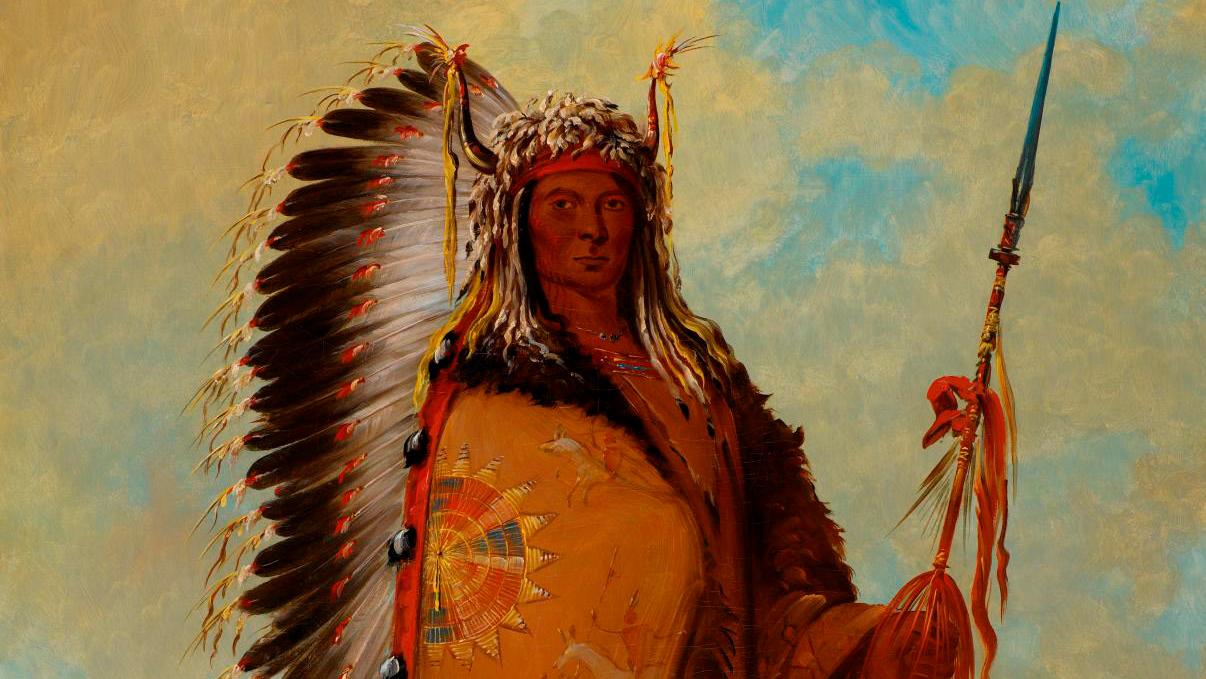In Lyon, a major historical, ethnological and artistic exploration of the image of "American Indians" in Europe sheds light on the real links that have existed between Native Americans and the French for centuries, and reaches beyond the clichés.
George Catlin (1796-1872), Portrait of Ee-ah-sa-pa (Black Rock), Chief of the Nee-Cow-e-je, a group in the Sioux tribe, 1845, oil on canvas, on deposit with the Louvre Museum, Musée du quai Branly-Jacques Chirac, Paris.
© Patrick Gries, Bruno Descoings
Who are the "Indigenous Americans"—the American Indian, the Sioux, the Apaches? What lies behind the images that come to mind when we talk about Native Americans? Why are they still often lumped together under the broad, reductive term "Indians" when in fact they are many different peoples with specific cultures? Why have they too often been traditionally defined by (frequently) violent behavior involving scalping, tomahawks, riding mustangs bareback and smoking peace pipes, and confined to a string of accessories like bows and…
com.dsi.gazette.Article : 31494
This article is for subscribers only
You still have 85% left to read.
